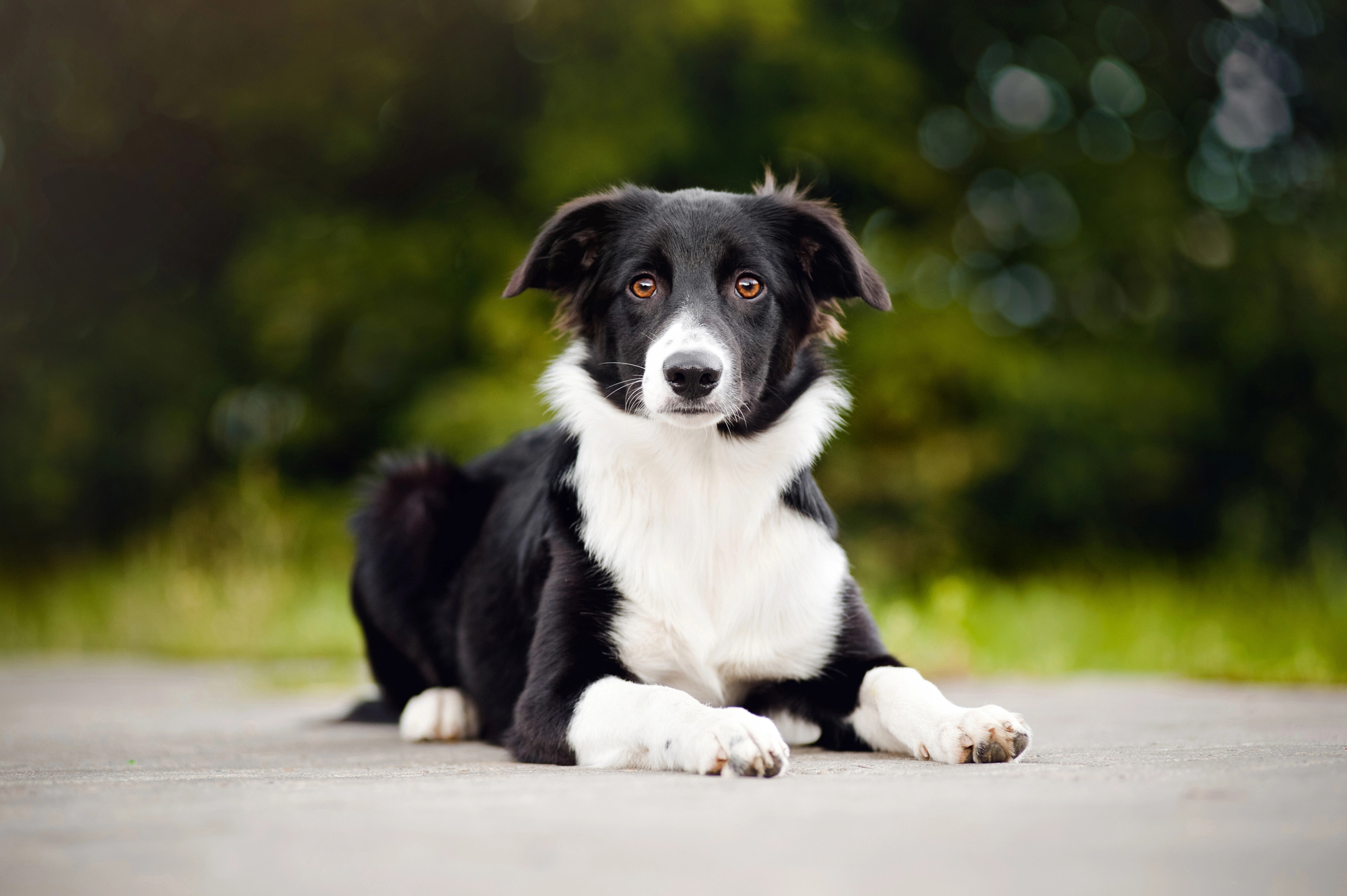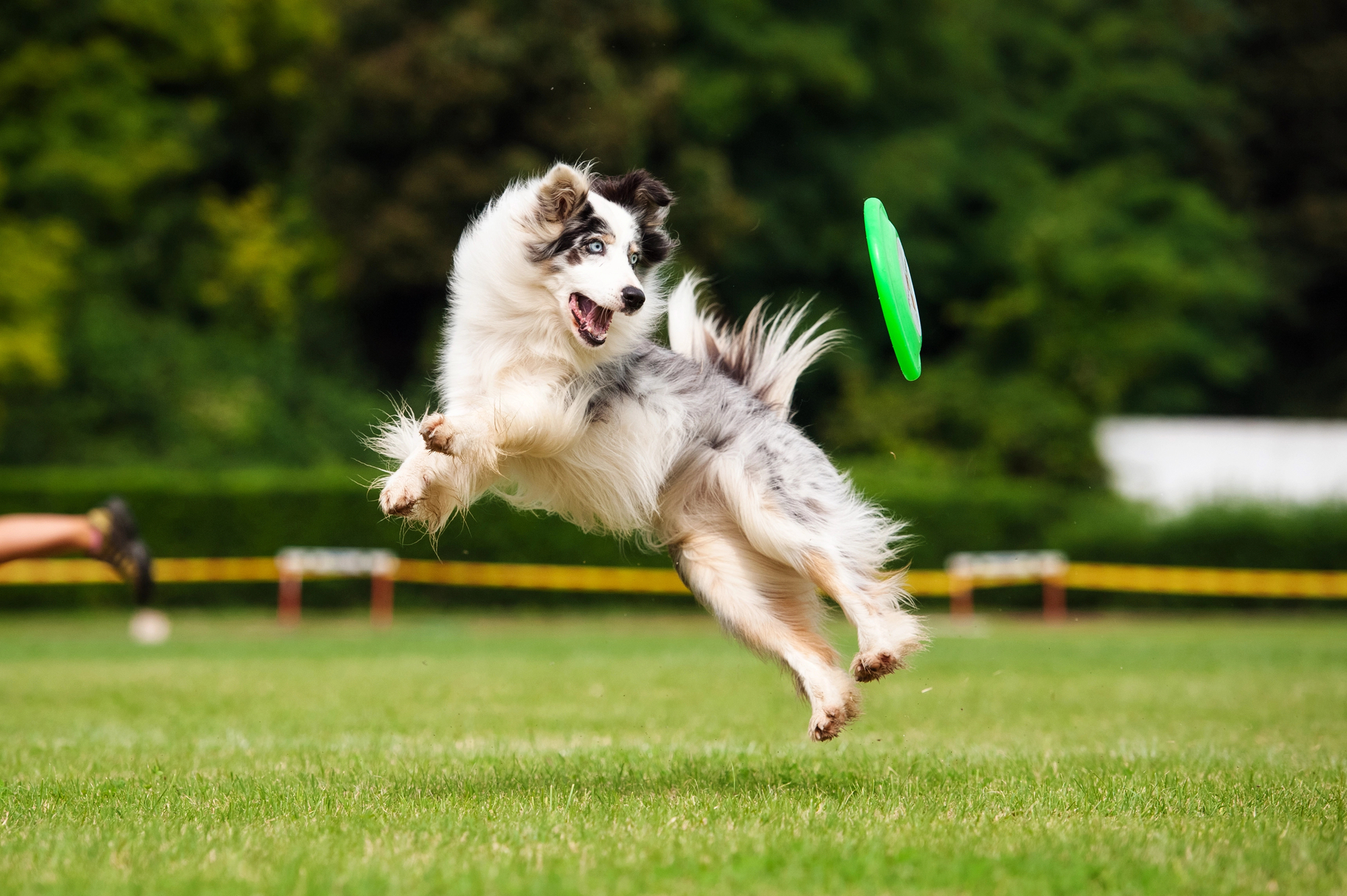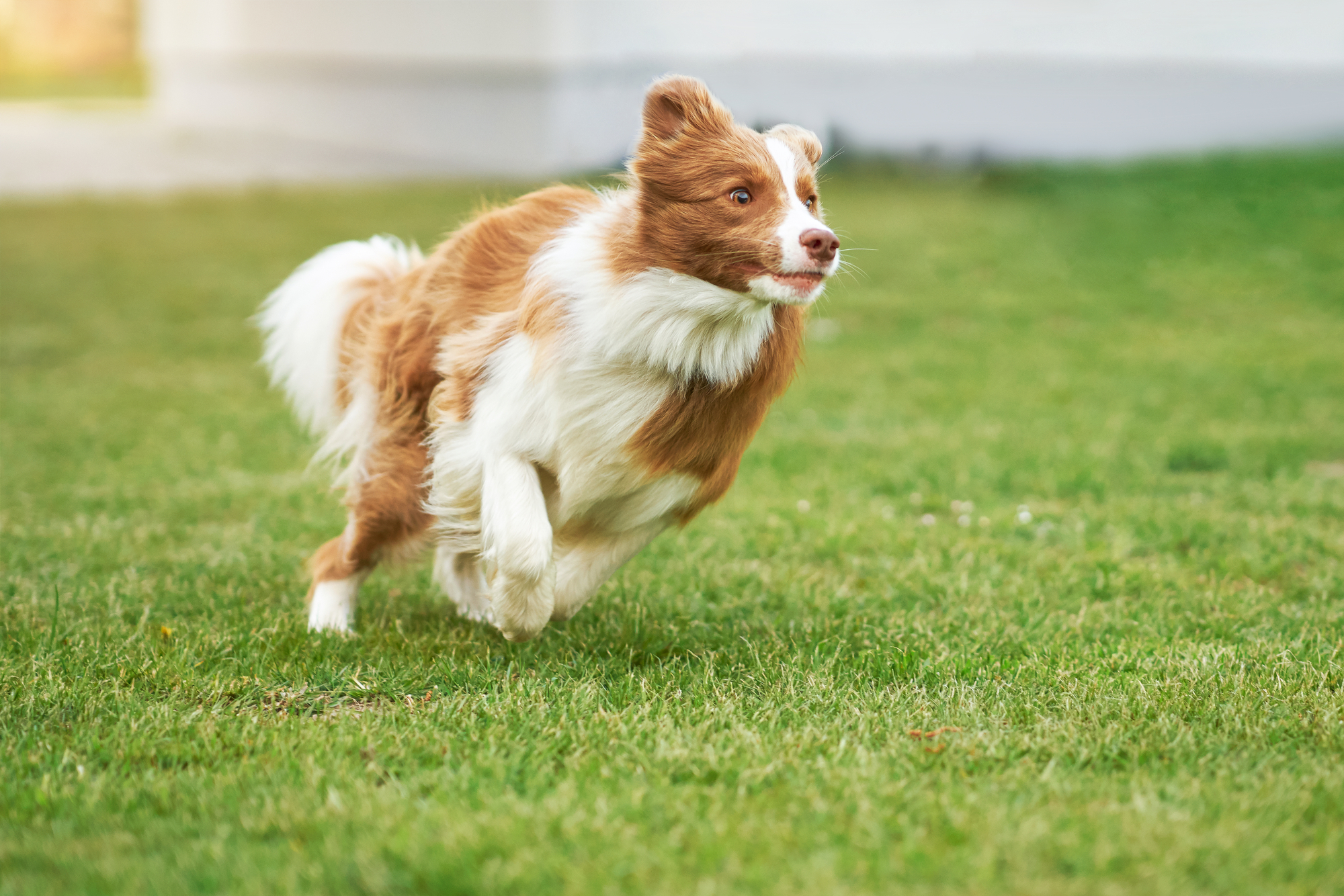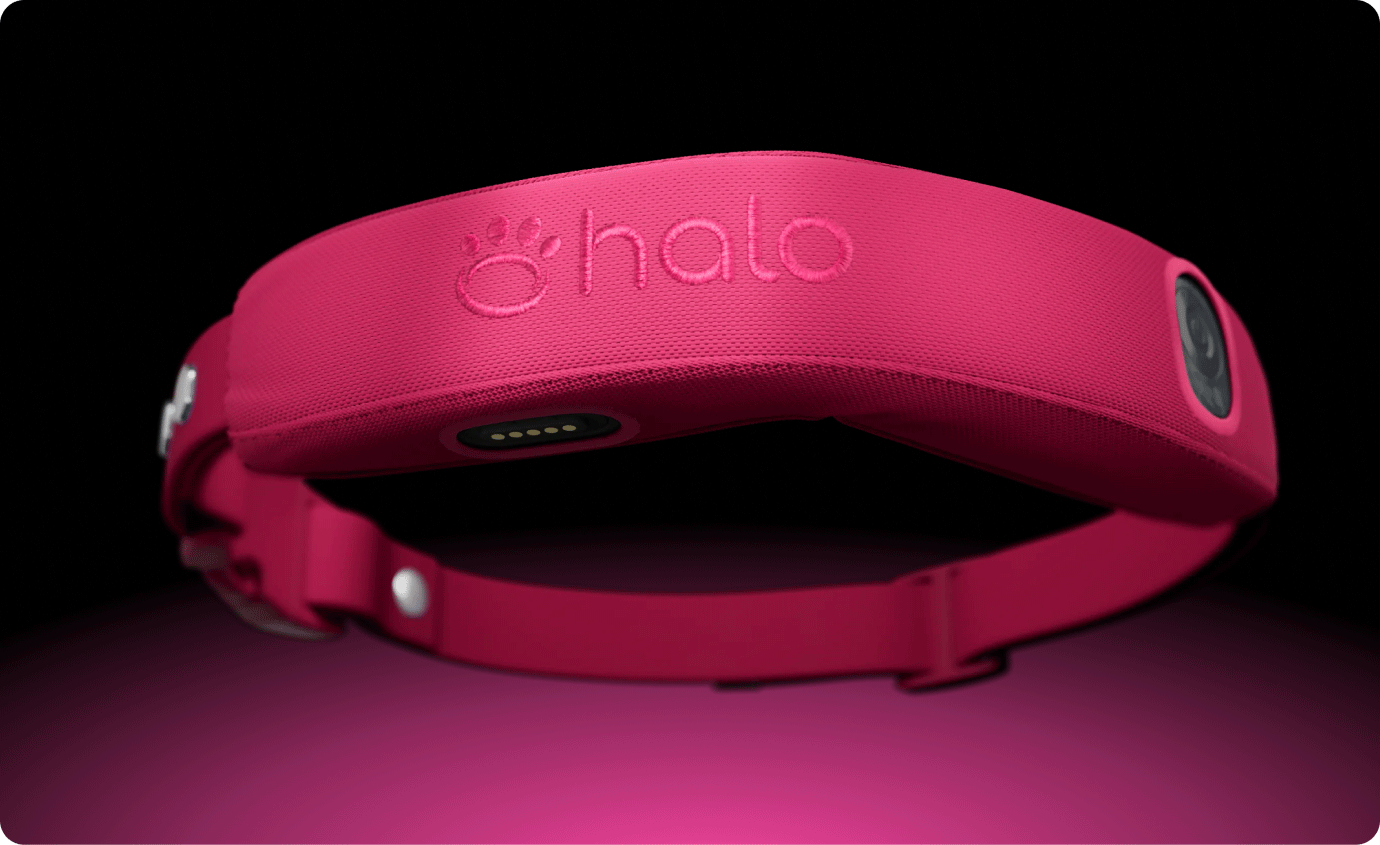Your Cart

Halo is backed by a 90-day satisfaction guarantee
Subtotal$0
Tax & Shipping Calculated at checkout
Total $0
Hardworking and energetic, border collies were bred to herd animals such as livestock and sheep. This intelligent breed is easy to train but needs plenty of physical and mental stimulation. They’re popular as family pets, working dogs and agility competitors. Read on to learn how to care for a border collie, including nutrition, exercise and training tips. You’ll discover what to expect when living with this affectionate breed and ways to help them thrive so you can share many years of happy companionship.
This intelligent breed is easy to train but needs plenty of physical and mental stimulation.

Male: Weight: 30-55 lbs; Height: 19-22 inches
Female: Weight: 30-55 lbs; Height: 18-21 inches
Yes
Yes, if socialized early
Yes
Easy to train; responds well to consistent, positive reinforcement
Weekly brushing; daily brushing when shedding
12-15 years
Energetic and eager to please
Alert, intelligent, responsive, friendly, affectionate
Black, rust, sable, or gray with white
Adjustable; Fits most dogs

Border collies are medium-sized dogs weighing between 30 and 55 pounds. They’re usually fully grown by 12 to 15 months of age. Males are about 19 to 22 inches in height and females between 18 and 21 inches tall.
Border collies have wide-set, oval-shaped eyes and a bright, alert expression. They use a focused stare when herding to coerce animals to move a certain direction. Their ears are usually triangular and erect, sitting high on the top of the head.
This breed has a medium double coat, starting with a dense undercoat that helps regulate their body temperature. The topcoat varies from short and smooth to medium-length and textured. Coat colors are varied and most commonly feature black, rust, sable or gray in combination with white.
Some border collies have a tricolored coat featuring tan markings or a merle coat blending light and dark patches of the same color. It’s not uncommon for these dogs to sport a distinctive blaze or strip of white down the middle of their face, sometimes extending to the collar and chest.
When you first welcome your dog home, get it used to its new environment and help it feel secure. Establish a schedule for meals, potty breaks, naps, play time and bedtime so it knows how it fits into your household routine. Gradually introduce your pet to new people, animals and experiences to ensure it’s comfortable in different situations.
Border collies are smart, attentive and eager to learn. Begin training them early to keep them safe and encourage good behavior. A good support system for training your dog not to roam is a wireless GPS dog fence. The fences allow you to set up perimeters for your dog to play, run and sniff, while keeping them safe.
You can start house training and teaching basic obedience commands such as “sit,” “stay” and “come” as early as 8 weeks. Border collies respond best to positive reinforcement rather than punishment and intimidation. Interact with your dog calmly and patiently, and reward your pup as soon as it performs the desired behavior.
Here are some tips to help train your puppy:
Older border collies also require a consistent approach when training. They tend to have longer attention spans than puppies but may need an extra helping of patience and understanding. Adult dogs may have learned habits that are hard to break or be poorly socialized and distrustful of humans.
Be consistent with your training. You should practice together every day for 5 to 10 minutes at a time, and give your older dog plenty of positive reinforcement. You may need to experiment to see what motivates it and choose rewards accordingly. Train it in the same place every day, and make sure there’s nothing happening to divert its attention. Everyone in your household should use the same commands to communicate with your dog.
Border collies are hardwired to herd small animals, but this instinct can sometimes come out at the wrong time. They may push, nip or bark as they try to move small children or other pets along. Make sure to train your collie to stop herding by using commands such as “stay” or “leave it.” A GPS dog collar monitored by an app on your phone is a tremendous support in allowing your dog to follow its instincts while ensuring they stay at a safe distance.
While your border collie’s coat doesn’t need cutting, do brush it once or twice a week to remove loose hairs and keep it free of knots. During the spring and fall when your dog is shedding, brush it daily. You can use a couple of different tools to keep its coat looking its best. A slicker brush, which has close-set, angled teeth, helps you reach the undercoat. A pin brush, with rubber or plastic tips, is useful for working through tangles on the topcoat. Brush slowly and gently to avoid pulling at your dog’s delicate skin.
Bathe your border collie every 2 or 3 months or as needed, using warm or lukewarm water and a shampoo formulated for dogs. Give it a good brushing before bathing to get rid of loose hair.
Regularly inspect your dog’s nails to make sure they aren’t touching the ground and starting to curl downward. Nails should be kept short for comfort.
Clean your dog’s teeth daily to keep them clean and free of plaque. Use a toothbrush designed specifically for dogs, which has a long handle to help you reach into its mouth and soft bristles that are gentle on its gums. Make sure to use a dog toothpaste, which is formulated with safe ingredients and tasty flavors to appeal to your pet. Dental chews can also help to remove buildup from the teeth between brushings.

Border collies can live for 12 to 15 years depending on lifestyle, health and genetics. You can help keep your pet healthy with regular wellness checkups. Your veterinarian will ensure your pet is vaccinated against preventable illnesses and check it for any potential health problems.
Border collies are more susceptible to some conditions than other breeds. These include:
Collie eye anomaly (CEA). This genetic disorder can cause vision defects or blindness. It occurs when a dog inherits a mutant gene. Veterinarians can test dogs to see if they carry the gene so breeders can prevent CEA from being passed on.
Feed your high-energy border collie a nutritious dog food, and make sure it always has fresh water to drink. Both canned and dry food can provide your pup with essential vitamins, minerals and nutrients. Some dogs like the crunch of kibble, which may help rub plaque off your pet’s teeth as it chews. Wet dog food is usually more expensive but contains moisture to support hydration.
Read product labels and look for dog food that’s approved by the Association of American Feed Control Officials (AAFCO). According to AAFCO guidelines, dog foods that contain the required nutrients for a particular life stage may be marketed as “complete.” Products with the correct ratio of nutrients for the life stage are labeled as “balanced.”
Choose a complete, balanced dog food containing wholesome ingredients. Quality protein sources, for example, should be at the top of the ingredient list.
Border collies have different nutritional needs based on their age. If your pet is under 1 year old, feed it a puppy formula, which is optimized with nutrients and calories to support their rapid growth.
You can transition from a puppy dog food to an adult formula once your border collie is around 12 months old. If your dog still seems to be growing, you can wait a few months longer. Adult dog foods have less protein and fat and are formulated to help maintain their weight. Introduce the adult food by mixing a little into its puppy food, and gradually increase the ratio until your dog is eating only adult food.
To determine how much to feed your dog, look at the feeding directions on the pet food label. Divide the daily recommended amount into the appropriate number of meals.
Puppies have small stomachs and should be fed three or four times a day. As they get older, decrease the number of feedings. Adult border collies should have two meals a day, one in the morning and one at night.
The feeding instructions on the label are guidelines, but you should adapt them for your dog’s specific needs. If your pet is getting older and less active, it may need fewer calories. Or your high-energy border collie might need more kibble than recommended to keep it fueled. Your veterinarian can help you determine if your dog’s diet needs adjusting.
A complete, balanced dog food provides your pet with enough nutrients to support its health. If you want to occasionally share food from your plate, make sure you know whether it’s safe for dogs. For example, you can give your pet small pieces of cooked and unseasoned meat such as chicken, pork or beef — just make sure to trim off the fat. Bite-sized pieces of carrots, green beans, celery, cauliflower and broccoli are also safe. Vegetables may be offered raw or cooked, provided they aren’t prepared with spices or sauces. Your dog might also enjoy fruits such as apples, bananas, watermelon, cantaloupe, strawberries and pears without the peel, rind, core or seeds.
Avoid feeding your border collie onions, garlic, avocado, grapes, raisins, cherries, macadamia nuts or wild mushrooms, as well as milk products, chocolate, anything containing caffeine and raw eggs, meat or fish. This also means making sure your pup doesn’t sneak food off your kitchen table when you’re not looking.
Border collies were bred as working dogs, spending their days outdoors herding animals. This high-energy dog requires at least an hour or two of physical activity each day. It can also get bored quickly and may get into trouble if you don’t provide enriching activities to keep it busy.
Here are some ways to help keep your border collie occupied:
Games. Give your pet an exercise ball to nudge around the yard to stimulate its herding instincts, or play a game of Frisbee with it. Border collies also like the shell game, where you hide a treat under one of three overturned cups for them to find.

Border collies want to be active participants in their owner’s life. They’re a good fit for families and individuals who want an outdoor companion for jogging, hiking and playing in the park. They’re not the best choice for those who can’t devote significant time and attention to these lively dogs.
Because of their energy level, access to outdoor space is important. Your border collie will love to explore and run around off-leash in a securely fenced yard or dog park. They may be able to adapt to small living spaces, such as apartments, if given enough opportunities for physical and mental stimulation.
Border collies are easy going, affectionate and loyal. They’re happy to meet new people but will bark loudly when excited or to alert you when someone’s at the door. Border collies can do well with other family pets. They enjoy the companionship of dogs and can be socialized to get along with cats.
While they require lots of enrichment to keep them engaged, they’re fairly easy to train and have minimal grooming needs aside from daily brushing when shedding.
In general, border collies are affectionate and playful and can be good companions for children who know how to give them space and interact with them respectfully.
Young children should be supervised when any dogs are present. Border collies are typically nonaggressive but do have a strong herding instinct and may try to direct children who are darting around them. You can train your border collie to stop what they’re doing if they attempt to herd, push or nip at children.
As traditional working dogs, border collies have plenty of energy to expend. They need at least 1 to 2 hours of exercise throughout the day, including some vigorous running. Follow your border collie’s cues. Some may be content with a few 20-minute walks a day and a game of fetch. If your dog seems restless, it needs more exercise. By investing in a GPS dog fence, you can ensure your dog has lots of playtime at home or in the park, without roaming at an unsafe distance.
Border collies don’t need haircuts, but their medium coat should be brushed once or twice a week to remove loose hairs. When they’re shedding, switch to daily brushings.
Brush their teeth daily, and trim their nails regularly to keep them short. Your border collie should be bathed every few months as needed, or after it’s gotten particularly dirty on an outdoor adventure.
Border collies are intelligent, quick-thinking dogs that are accustomed to working and carrying out specific tasks. As a result, they’re responsive and relatively easy to train. Teaching them new commands and tricks is a great way to challenge them mentally and keep them stimulated.
Give your pet plenty of positive feedback when it performs well. Use incentives to motivate your dog, as it will associate good behavior with tasty treats, fun toys and other desirable rewards.
Because of their size and genetics, this breed is at a higher risk of developing conditions such as hip dysplasia or epileptic seizures. They’re also predisposed to a joint disorder called osteochondritis dissecans and a vision disorder known as collie eye anomaly.
Even if your border collie seems healthy, take your pet for regular veterinary checkups. This is an important part of preventive care. Your vet will give it a physical exam, check its weight and look for potential health issues.
Border collies have an average lifespan of 12 to 15 years. Some factors affecting their longevity are beyond your control, such as genetics and inherited conditions. However, as a pet guardian, you can give your dog the best possible chance to thrive by taking good care of it.
Ensure your pet eats a nutritious diet, gets plenty of exercise and maintains a healthy weight. Give it a safe living environment and keep toxic foods and chemicals out of its reach. You can also nurture its emotional well-being by showering it with affection and love.
Most border collies can live alongside other pets if socialized early. They may try to herd smaller animals, such as cats, but are usually nonaggressive.
Border collies enjoy urban and rural living, as long as they have space to play and explore. They can even adapt to living in small indoor spaces, such as apartments, if you regularly take them out and keep them active. A large, secure yard makes it easy to step outside and play at any time, but border collies are equally happy with outings to nearby parks, trails and beaches.
Someone who’s adopting a dog for the first time may find border collies difficult to manage because of the time required to care for them. However, caring for this breed isn’t about how many dogs you’ve owned. Anyone adopting a border collie must be ready to devote time and energy to training their pet and keeping them physically and mentally stimulated. Border collies demand significant attention and become frustrated or bored if left alone for long periods of time.
Otherwise, border collies are intelligent and quick to learn. If you don’t have experience in training a dog, consider obedience classes to help you communicate with your pet and teach it the necessary skills.
Your border collie needs adequate vitamins and minerals to fuel its busy lifestyle and keep it healthy. Many commercial dog foods are formulated to provide the ideal combination of nutrients, depending on its energy requirements and growth stage. You can choose wet or dry dog foods specifically formulated for puppies, adults and pregnant or nursing dogs.

Border Collies are extremely active dogs, and as a responsible pet owner you want to do everything you can to keep them healthy, active and safe. If you are looking for a versatile way to provide your Border Collie with a safe perimeter, and a way to track how much exercise they get, invest in Halo Collar. Halo Collar is a wireless GPS fence with a convenient phone app that allows you to set up a safe perimeter at home, on walks, or nearly anywhere you take your dog. Shop for your Halo Collar today.

Halo is backed by a 90-day satisfaction guarantee
Subtotal$0
Tax & Shipping Calculated at checkout
Total $0